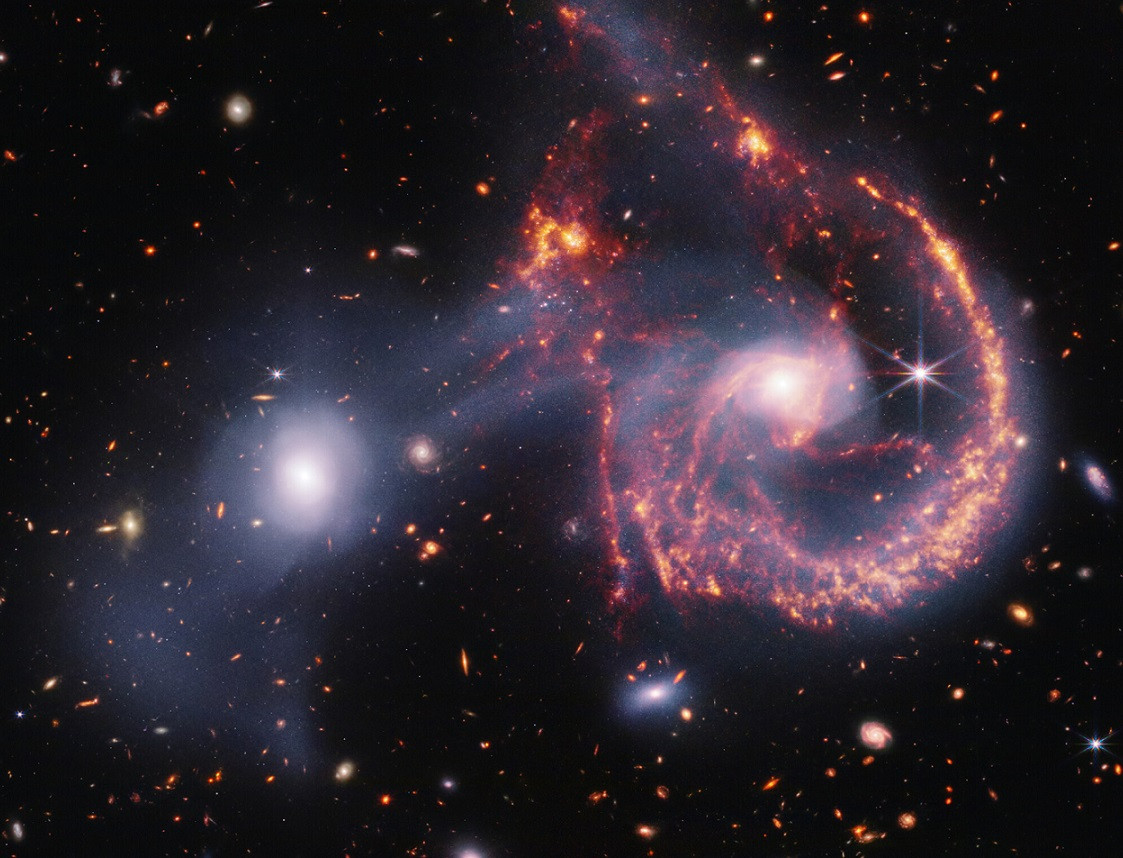🔭 🧪 #extragalactic 🧵
Breathtaking!
This image from #JWST provides a wealth of information about Arp 107, a pair of interacting galaxies caught in the early stages of a merger.
It's therefore an extraordinary window into the interaction between 2 galaxies,
Source➡️ https://webbtelescope.org/contents/news-releases/2024/news-2024-132
Breathtaking!
This image from #JWST provides a wealth of information about Arp 107, a pair of interacting galaxies caught in the early stages of a merger.
It's therefore an extraordinary window into the interaction between 2 galaxies,
Source➡️ https://webbtelescope.org/contents/news-releases/2024/news-2024-132

Comments
in this case an elliptical and a spiral.
The composite was created with data from NIRCam (Near-InfraRed Camera) and MIRI (Mid-InfraRed Instrument).
The collision distorted the shapes of the galaxies, creating a tenuous gas bridge between them and a tidal tail, highlighted by the NIRCam data
(shown in white), which also reveals older stars within the two galaxies.
The collision appears to have stimulated the formation of new stars, as suggested by the MIRI data (shown in red-orange). MIRI also reveals the supermassive black hole at the center of the large spiral galaxy on the right.
This galaxy is classified as a Seyfert galaxy, indicating an active galactic nucleus (AGN).
Arp 107 is located about 465 Mly from Earth, in the constellation Leo Minor.
The region had already been observed in the infrared by the Spitzer Space Telescope, but the combined use of NIRCam and MIRI
allowed scientists to see beyond what was visible with previous telescopes, revealing details about the composition and activity of the two galaxies.
This image not only captures a unique aesthetic moment but is also a valuable resource
for better understanding the dynamics of galactic collisions, star formation, and galaxy evolution.
Credit: NASA, ESA, CSA, STScI